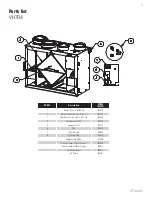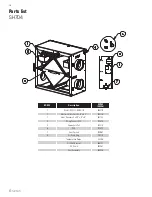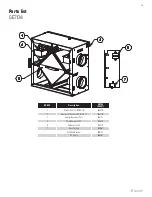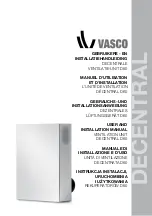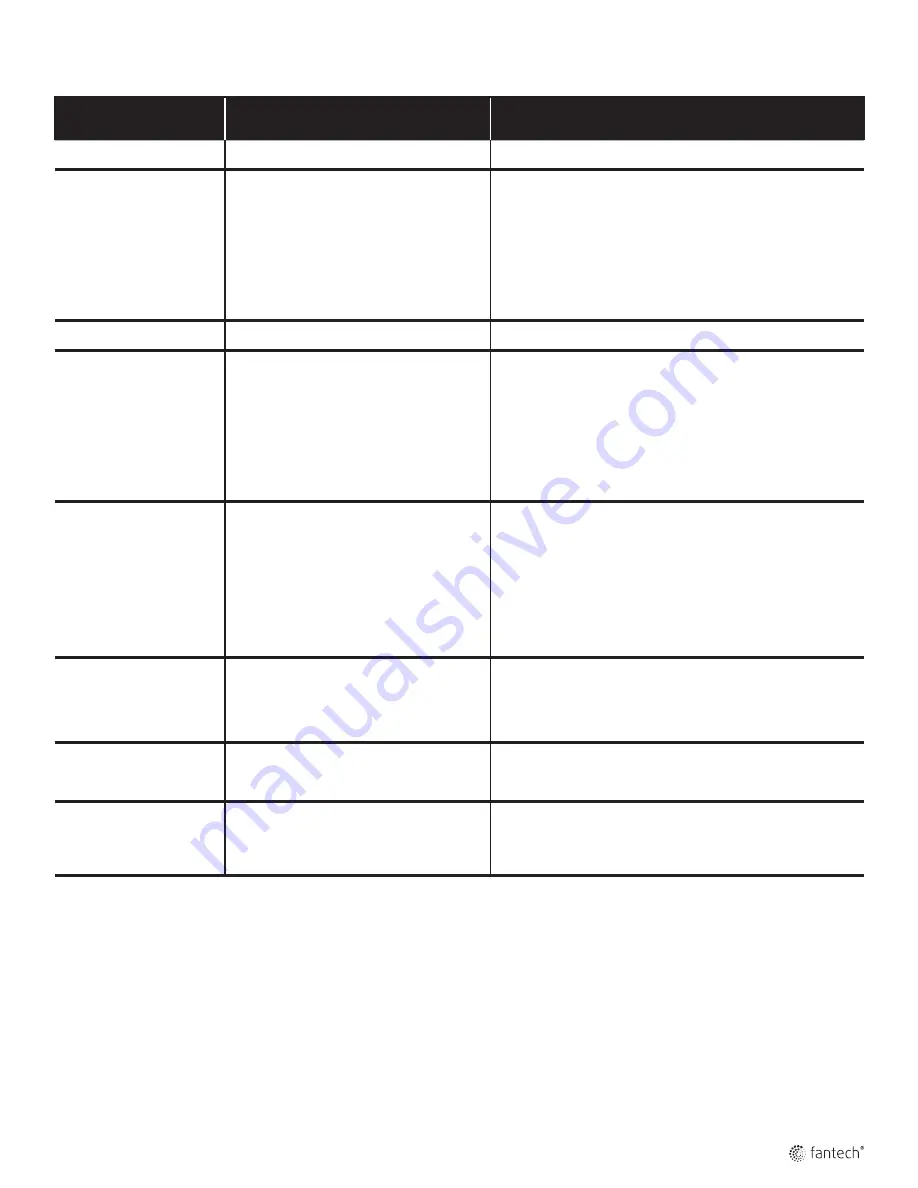
15
Troubleshooting
Problem
Causes
Solutions
Air is too dry
Insufficient water vapour generated
Install humidifier
Air is too humid
Sudden increase in humidity by cooking or bathing
Ventilate at the source of the problem using a HRV or additional fan
Sudden change in temperature
Wait until outside temperature stabilizes (winter). Heating will also improve
situation.
Storing too much wood for heating
Store a majority of your wood outside. Even dried, a cord of wood contains
more than 20 gallons of water.
Dryer vent exhaust is inside home
Arrange outside vent for dryer.
Poor air circulation near windows
Open curtains or blinds. Bay or bow windows may require mechanical method.
HRV not operating (during winter)
Check power to the unit
Persistent condensation
on window
Poor air circulation near windows
Open curtains or blinds. Bay or bow windows may require mechanical method.
Poor Air Flows
1/4" (6mm) mesh on the outside hoods is plugged
Clean exterior hoods or vents
Filters plugged
Remove and clean filter
Core obstructed
Remove and clean core
Indoor grilles closed or blocked
Check and open grilles
Dampers are closed (if installed)
Have electrician check supply voltage
Poor power supply at site
Check duct installation
Ductwork is restricting HRV/ERV
Supply air feels cold
Poor location of supply grilles, the airflow may irritate
the occupant
Locate the grilles high on the walls or under the baseboards, install ceiling
mounted diffuser or grilles so as not to directly spill the supply air on the oc-
cupant (eg. Over a sofa)
Use superior grilles such as Fantech CG grille A small duct heater (1kw)
could be used to temper the supply air
Placement of furniture or closed doors is restricting the movement of air in
the home
Outdoor temperature extremely cold
If supply air is ducted into furnace return, the furnace fan may need to run
continuously to distribute ventilation air comfortably
HRV / ERV and / or Ducts Frosting
up
HRV/ERV air flows are improperly balanced
Have HVAC contractor balance the HRV/ERV airflows
Malfunction of the HRV defrost system
Note: minimal frost build-up is expected on cores before unit initiates defrost
cycle functions
Outdoor temp. extremely cold
Install duct heater
Condensation or Ice Build Up in
Insulated Duct to the Outside
Incomplete vapour barrier around insulated duct
Tape and seal all joints
A hole or tear in outer duct covering
Tape any holes or tears made in the outer duct covering
Ensure that the vapour barrier is completely sealed.
Condensation or Ice Build Up in
Insulated Duct to the Outside
Incomplete vapour barrier around
insulated duct
A hole or tear in outer duct covering
Tape and seal all joints
Tape any holes or tears made in the outer duct covering
Ensure that the vapour barrier is completely sealed.

















